Azure App Service Environment

An Azure App Service Environment is an Azure App Service feature that provides a fully isolated and dedicated environment for running App Service apps securely at high scale. This integration helps in monitoring your environments operational events such as upgrades, scaling, and suspensions.
The below instructions applies to App Service Environment v3.
Log types
For Azure App Service Environment, you can collect the following logs:
-
Activity logs, provides insight into any subscription-level or management group level events that have occurred in the Azure. To learn more, refer to the Azure documentation.
-
App Service Environment Platform Logs. Logs are only emitted when your App Service Environment has an event (for example, a scale operation with an App Service Environment) that triggers the logs. To learn more about the different situations and messages collected for Azure App Service Environment, refer to the Azure documentation.
Setup
Azure service sends monitoring data to Azure Monitor, which can then stream data to Eventhub. Sumo Logic supports logs collection from Azure Monitor using our Azure Event Hubs source.
You must explicitly enable diagnostic settings for each Azure App Service Environment you want to monitor. You can forward logs to the same event hub provided they satisfy the limitations and permissions as described here.
When you configure the event hubs source or HTTP source, plan your source category to ease the querying process. A hierarchical approach allows you to make use of wildcards. For example: Azure/AppServiceEnvironment/Logs.
Configure logs collection
Diagnostic logs
In this section, you will configure a pipeline for shipping diagnostic logs from Azure Monitor to an Event Hub.
- To set up the Azure Event Hubs source in Sumo Logic, refer to Azure Event Hubs Source for Logs.
- To create the Diagnostic setting in the Azure portal, refer to the Azure documentation. Perform the below steps for each Azure App Service Environment that you want to monitor.
- Choose
Stream to an event hubas the destination. - Select
App Service Environment Platform Logs. - Use the Event Hub namespace and Event Hub name configured in previous step in destination details section. You can use the default policy
RootManageSharedAccessKeyas the policy name.
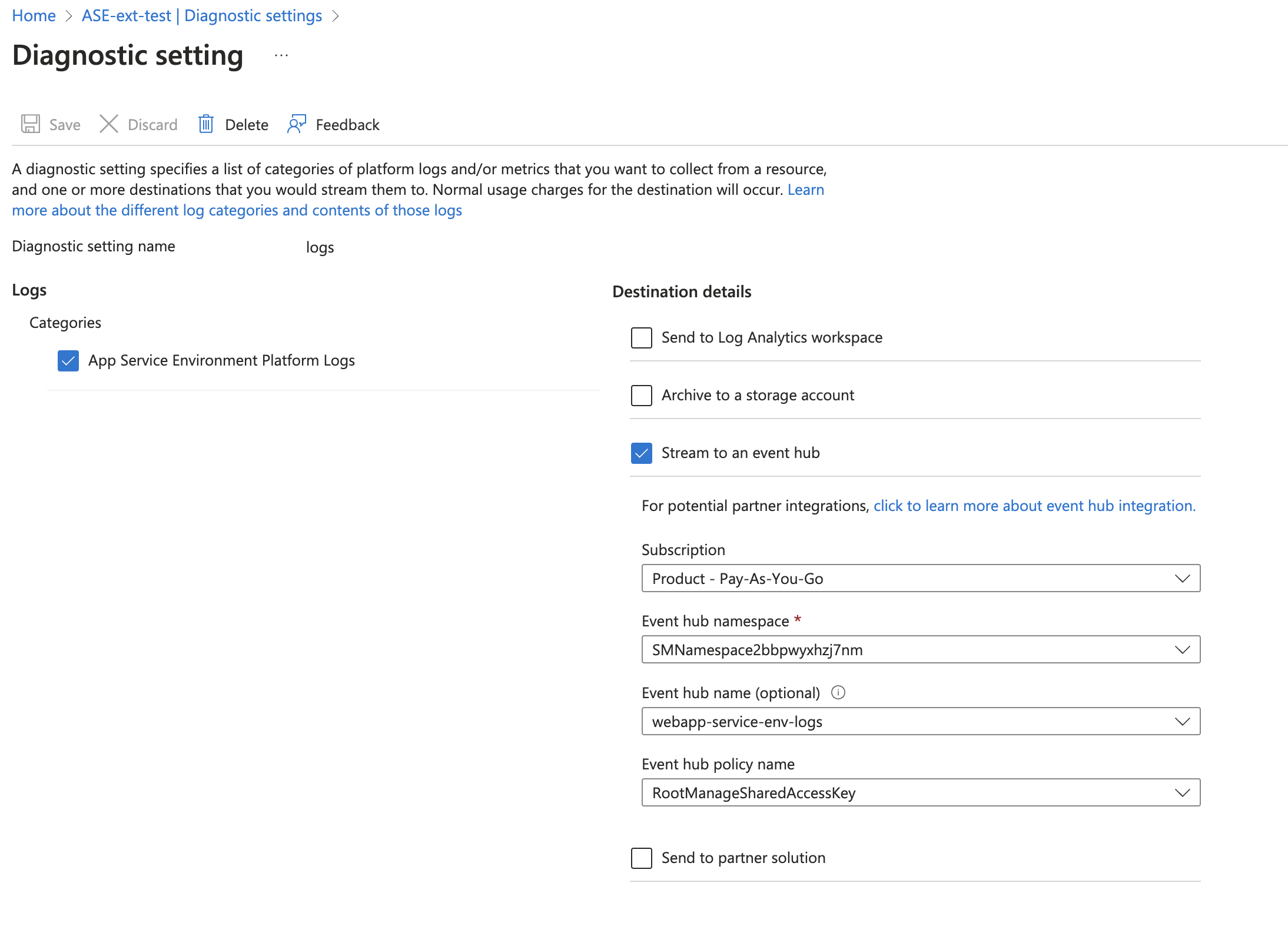
- Choose
- Tag the location field in the source with right location value.
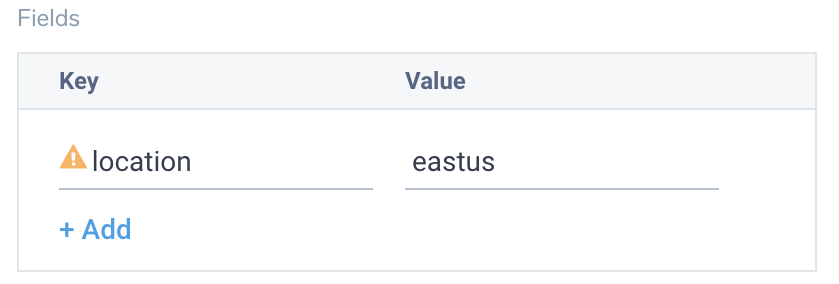
Activity logs (optional)
To collect activity logs, follow the instructions here. If you are already collecting activity logs for a subscription, do not perform this step.
Installing the Azure App Service Environment app
This section provides instructions on how to install the Azure App Service Environment app, and shows examples of each of the preconfigured dashboards you can use to analyze your data.
To install the app, do the following:
Next-Gen App: To install or update the app, you must be an account administrator or a user with Manage Apps, Manage Monitors, Manage Fields, Manage Metric Rules, and Manage Collectors capabilities depending upon the different content types part of the app.
- Select App Catalog.
- In the 🔎 Search Apps field, run a search for your desired app, then select it.
- Click Install App.
note
Sometimes this button says Add Integration.
- Click Next in the Setup Data section.
- In the Configure App section of your respective app, complete the following field.
- Index. Specify value for _index if the collection is configured with custom partition. Learn more. Default value is set to
sumologic_default(default partition)
- Index. Specify value for _index if the collection is configured with custom partition. Learn more. Default value is set to
- Click Next. You will be redirected to the Preview & Done section.
Post-installation
Once your app is installed, it will appear in your Installed Apps folder, and dashboard panels will start to fill automatically.
Each panel slowly fills with data matching the time range query received since the panel was created. Results will not immediately be available but will be updated with full graphs and charts over time.
As part of the app installation process, the following fields will be created by default:
tenant_name. This field is tagged at the collector level. You can get the tenant name using the instructions here.location. The region the resource name belongs to.subscription_id. ID associated with a subscription where the resource is present.resource_group. The resource group name where the Azure resource is present.provider_name. Azure resource provider name (for example, Microsoft.Network).resource_type. Azure resource type (for example, storage accounts).resource_name. The name of the resource (for example, storage account name).service_type. Type of the service that can be accessed with an Azure resource.service_name. Services that can be accessed with an Azure resource (for example, in Azure Container Instances the service is Subscriptions).
Viewing Azure App Service Environment dashboards
All dashboards have a set of filters that you can apply to the entire dashboard. Use these filters to drill down and examine the data to a granular level.
- You can change the time range for a dashboard or panel by selecting a predefined interval from a drop-down list, choosing a recently used time range, or specifying custom dates and times. Learn more.
- You can use template variables to drill down and examine the data on a granular level. For more information, see Filtering Dashboards with Template Variables.
- Many of the Next-Gen apps allow you to provide the Index at the installation time and a default value for this key (sumologic_default). Based on your input, the app dashboards will be parameterized with a dashboard variable, allowing you to change the data partition queried by all panels. This restricts the query scope of all the dashboard queries to a specific data partition.
Overview
The Azure App Service Environment - Overview dashboard provides comprehensive information of all the service health incidents or resource health events associated with Azure App Service Environments in your azure account.
Use this dashboard to:
- View recent resource and service health incidents.
- View distribution of service and resource health by incident type.
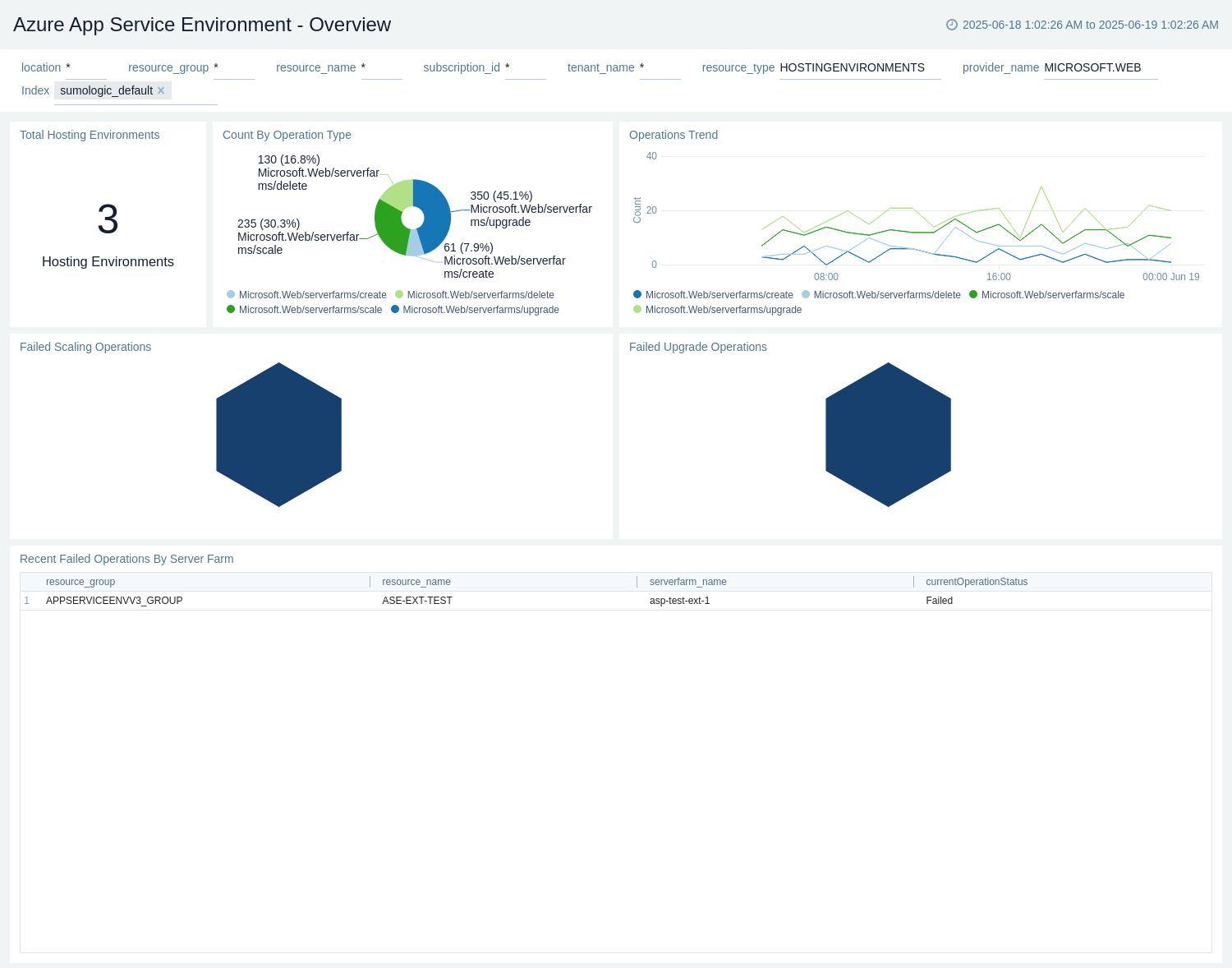
Operations
The Azure App Service Environment - Operations dashboard offers comprehensive insights into the scaling, upgrade events for your Azure App Service Environment.
Use this dashboard to:
- Analyze scaling and upgrade events for your App Service Environment
- Identify potential operations issues affecting your app service environment.
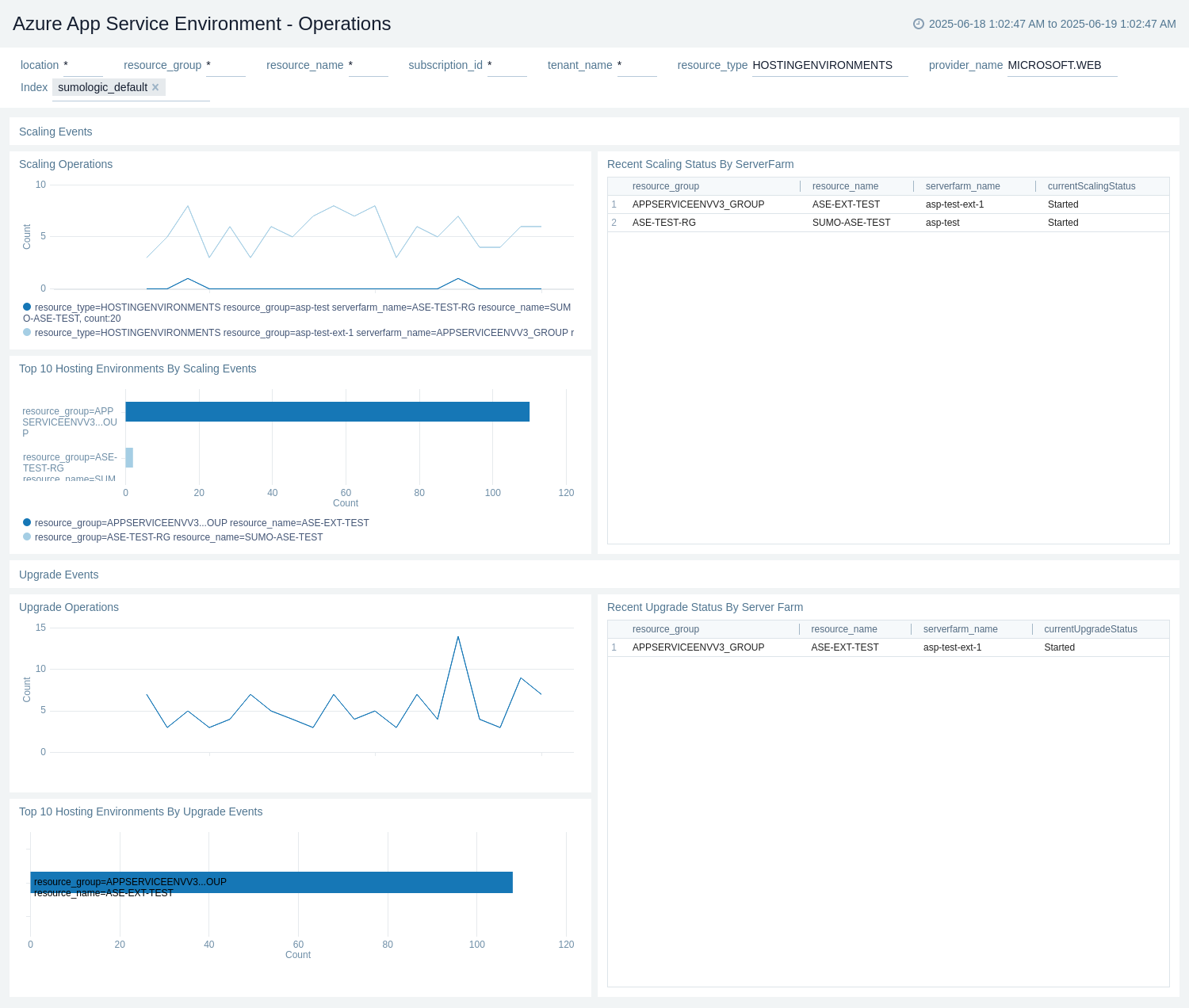
Administrative Operations
The Azure App Service Environment - Administrative Operations dashboard provides details on read/write/delete specific changes, different operations used, top 10 operations that caused most errors, and users performing admin operations.
Use this dashboard to:
- Identify top users performing administrative operations.
- View Top 10 operations that caused the most errors.
- View recent read, write, and delete operations.
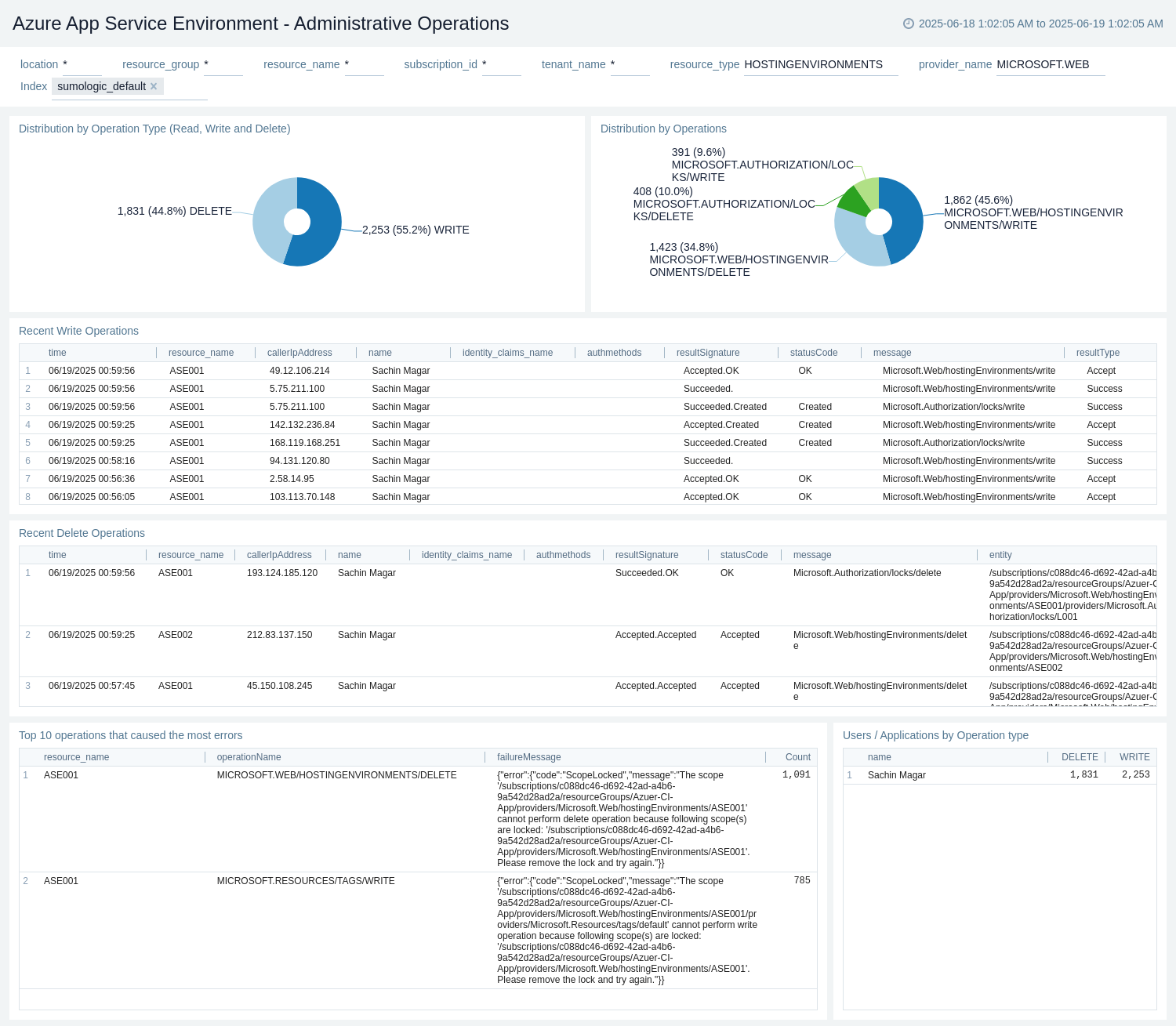
Upgrading the Azure App Service Environment app (Optional)
To update the app, do the following:
Next-Gen App: To install or update the app, you must be an account administrator or a user with Manage Apps, Manage Monitors, Manage Fields, Manage Metric Rules, and Manage Collectors capabilities depending upon the different content types part of the app.
- Select App Catalog.
- In the Search Apps field, search for and then select your app.
Optionally, you can identify apps that can be upgraded in the Upgrade available section. - To upgrade the app, select Upgrade from the Manage dropdown.
- If the upgrade does not have any configuration or property changes, you will be redirected to the Preview & Done section.
- If the upgrade has any configuration or property changes, you will be redirected to the Setup Data page.
- In the Configure section of your respective app, complete the following fields.
- Field Name. If you already have collectors and sources set up, select the configured metadata field name (eg _sourcecategory) or specify other custom metadata (eg: _collector) along with its metadata Field Value.
- Click Next. You will be redirected to the Preview & Done section.
Post-update
Your upgraded app will be installed in the Installed Apps folder and dashboard panels will start to fill automatically.
See our Release Notes changelog for new updates in the app.
To revert the app to a previous version, do the following:
- Select App Catalog.
- In the Search Apps field, search for and then select your app.
- To version down the app, select Revert to < previous version of your app > from the Manage dropdown.
Uninstalling the Azure App Service Environment app (Optional)
To uninstall the app, do the following:
- Select App Catalog.
- In the 🔎 Search Apps field, run a search for your desired app, then select it.
- Click Uninstall.